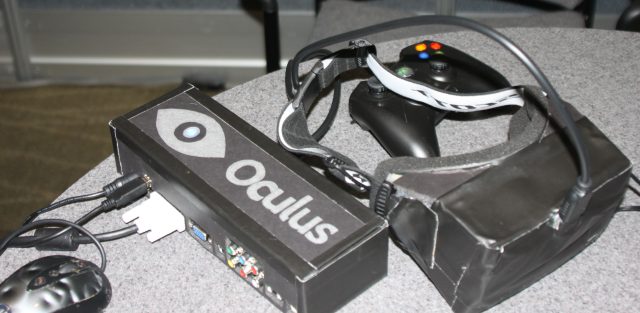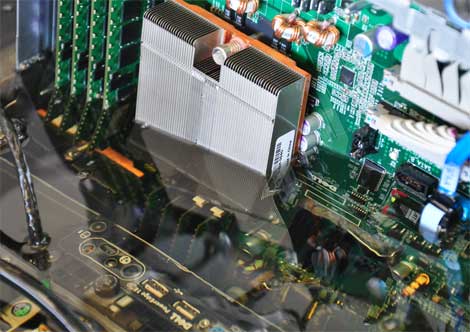-
Posts
962 -
Joined
-
Last visited
-
Days Won
3
Posts posted by adonisslanic
-
-
-
Si uni tot nu scriu corect...
Oh the irony... xD
-
Nvidia se incalzeste foarte tare, parca e ca o traditie a lor sa stea mereu pe +70 grade cand sunt fortati...
ATI e perfect pentru gaming, si pentru cei care folosesc linux (Nvidia au devenit really assholes in ultima vreme cu suportul pentru Linux).
Placa video care vrei sa o cumperi e veche de 2 generatii, dar se tine chiar foarte bine
 Si da, in opinia mea, depaseste alternativa ta din tabara Nvidia... in primul rand din cauza suportului, si in al doilea rand din cauza performantei si a vramului dublu. Intre cele 2 placi recomand jucaria de la ATI
Si da, in opinia mea, depaseste alternativa ta din tabara Nvidia... in primul rand din cauza suportului, si in al doilea rand din cauza performantei si a vramului dublu. Intre cele 2 placi recomand jucaria de la ATI -
Ce dramatic a putut sa fie introul

-
-
Verde imi da iluzia cateodata ca stau intr-o groapa veche din anii 90... Nu da contrastul ala pentru care ar trebui sa lupte orice hacker... pentru libertatea informatiei, pentru open-source, pentru libertate in general... Albastrul iti aduce aminte de cer, de aer, de spatiu deschis... D-asta ar fi bine sa schimbam tonul forumului in albastru...
P.S.: Se si potriveste cu culoarea avatarului meu :">
-
Nice tip, o sa incerc zilele astea

-
7 si 17 mi se par cele mai decente

// Trebuia sa faci un poll ca sa nu se faca spam pe topic xD


-
-
Y u no Arch Linux xD Cred ca m-as baga eu cu bogdannbv sa facem an Arch Linux flavour....
-
-
imgur: the simple image sharer
TinyPic - Free Image Hosting, Photo Sharing & Video Hosting
Personal folosesc in 99% din cazuri imgur

-
Schimba imaginile pentru acele 404 errors

70% din ele stiam, thx for the new ones =(^-^)=
-

Chiar trebuia sa faci un topic nou?
-
Da dar nu exista nimic "oficial" cu garantie cred... Prefer sa se strice ceva care e de la ei, cu garantie and stuff, decat sa fac un sistem DIY

-
Nu cred ca mai stie/are nimeni fontul original....Logoul e aici in topic, postat de Gecko

https://rstcenter.com/forum/58283-header-forum-10.rst#post385338
-
Oh god....
 Ieri toata ziua am avut probleme in backtrack cu intel+nvidia hybrid graphics(cica optimus...). Si nici acum nu am reusit sa rezolv... And now this...xD
Ieri toata ziua am avut probleme in backtrack cu intel+nvidia hybrid graphics(cica optimus...). Si nici acum nu am reusit sa rezolv... And now this...xD -
Ne poti prezenta un "formular" cu ce cunostinte ai tu ?
De ce sa faca asta? Nu aplica la un job, doar s-a inregistrat pe forum si ne-a salutat

-

Given this week’s leak of over 1 million unique Apple device IDs, mobile security has been on a lot of minds. One web developer is now calling attention to a possible security risk in the popular WhatsApp messaging service on Android that could result in messages being intercepted or spoofed.
WhatsApp has become immensely popular – it recently hit a new record of 10 billion messages sent and received in a single day, but that popularity could make it a prime target for hackers and scammers.
Sam Granger (via Hacker News) notes that WhatsApp for Android is insecure because it uses a phone number for a username and a modified version of the IMEI number (inverted with an MD5 cryptographic hash, in case you were wondering) as a password. IMEI, or International Mobile Equipment Identity, is a number used for identifying certain types of phones.
The iPhone version of the app does not appear to have the flaw. Granger said he didn’t know whether the Windows Mobile and BlackBerry versions use the same password generation method.
Granger’s post isn’t particularly new information, as the WhatsApp Wikipedia entry already says that the service uses the phone number and IMEI. He does, however, point out that there are several “rather simple” ways to obtain both pieces of information.
“Is this already happening? It wouldn’t surprise me if it is,” he wrote. “I’ve succeeded in sending/receiving messages (from friends accounts who gave me permission to take their accounts over) and I’m not even a “hardcore hacker.””
Granger concluded by saying that he loves WhatsApp, but feel it’s “far from “secure.”"
TNW has contacted WhatsApp about the issue. So far, they’ve yet to respond, but we’ll update this post if they do.
This isn’t the first time that WhatsApp has faced criticism over security issues. In May 2011, a security hole was discovered that allowed accounts to be hijacked.
Meanwhile, some scammers are even using WhatsApp’s name (and popularity) to trick people. Last month, we noticed a number of Facebook apps trying to pass themselves off as the service.
Sursa: WhatsApp for Android Vulnerable to Hijacking Due to IMEI Password
Parere personala: Era de asteptat

-
Scuze, nu mi-am dat seama... No offense
 greseala mea
greseala mea -
Cititi pe sarite, sa nu incepeti cu tl;dr


After decades of virtual reality headsets that failed to live up to their somewhat sci-fi promise, it wouldn't have been a shock if developers and gamers cast a jaded eye toward the Oculus Rift Kickstarter campaign. Sure, the Rift boasted of crucial improvements to optics, head-tracking, and design issues that have held back previous similar headsets, but it was still an unproven prototype in a sector that has seen its fair share of failure. Now that the campaign has brought in nearly $2.5 million by selling development kits to nearly 10,000 game developers around the world, though, it seems that the time for a truly mass-market VR headset might finally be at hand.
Much of that Kickstarter success is due to the early support of Doom and Quake creator John Carmack. He had been mulling over his own ideas for a VR headset earlier this year when he stumbled across details of an early prototype of the Rift on an obscure stereo 3D and headset forum. When Carmack approached creator (and VR headset collector) Palmer Luckey about buying a prototype, Luckey instead insisted he have one to try for free. Days later, Carmack was showing off that early Rift prototype to journalists and other interested parties at E3, and touting it as the best virtual reality headset he's ever used.
Carmack's support was key to getting Oculus Rift CEO (and former Autodesk, Scaleform, and Gaikai executive) Brenden Iribe to take a second look at the Oculus when the startup approached him earlier this year. "If somebody called and said, 'You need to meet with this young guy. He's making a VR headset,' you might say 'Ehh.'" In fact, even with Carmack's backing, Iribe said he was still skeptical when he first heard about the device. "I figured, 'Oh, what's Carmack up to now? Is this going to be really practical or not?' But then I thought, 'Carmack is practical, though,'" Iribe said. "He did 2D practically and figured out how to make Commander Keen work, and figured out how to do 3D and Doom and Quake so if he is this excited about VR, he must have figured out how to make it feel really good. Then you click it on and you're like, 'Oh shit, this is amazing.'"
That pretty much describes my reaction to the latest model of the Rift, equipped with Doom 3: BFG edition, at a PAX demo this weekend. The most striking thing about the experience is the sheer depth of the stereoscopic image, which wraps around the field of view without the eye-crossing, headache-inducing out-of-sync effect that sometimes comes with 3D glasses or viewing a head-mounted LCD too closely. The creators told me that this is a result of the Rift's optics—lenses that wrap the image around your field of vision in a way that mimics how your eye sees the real world, so straight lines are actually bowed in toward the center. Those optics also help improve the Rift's resolution where it's needed most, increasing the functional pixel density in the center of the view, where your eyes naturally rest, while decreasing it on the periphery.
Enlarge / From left to right: Rift creator Palmer Luckey, VP of product Nate Mitchell, and CEO Brenden Iribe
Kyle Orland
That's helpful, because the current Rift prototype only sends a 640x800 pixel image to each eye, making it lower resolution than other VR prototypes I've seen. The 3D image created at that range is certainly good enough to pass, but there's definitely a noticeable grain to the world that can be jarring to those used to playing on HDTVs and high-end monitors. "720p is a good first target for the dev kit and getting that out there as quickly as we can," Iribe said, adding that the final consumer unit might improve on that resolution.

What the Rift lacks in resolution, though, it makes up for in incredibly smooth head tracking, an area that seems to have become an absolute obsession for the Oculus team. While I was perfectly satisfied with the way my view updated seemingly immediately as I looked around virtual rooms, Iribe said he'd like to get the refresh rate on the final consumer units down to the "single digit milliseconds," rather than the 15- to 30-millisecond rates on the current display. "That's what we're pushing on. Certainly for the consumer unit we want to have screen technology that just blows people away," he said. "Everybody's going to see when they get the development kits, 'Oh, there's a little bit of motion blur.' [That's] pixels changing from one color to the next. It's not the game not running fast enough, it's the pixel not changing fast enough."
Having a refresh rate that high would allow for games to run beyond the 60 frames per second currently being shown off in Rift demos, which would lead to a noticeable improvement in the realism of the world the Rift immerses you in, Iribe said. "[it's] unlike in the old days where it was just a mouse and a keyboard and it was arguable whether there was a difference between 60 and 100 and 150 [frames per second]... At some point there is obviously diminishing returns, but the faster you can go in frames per second and the refresh response time on the screen, the more natural and realistic the head tracking feels, because your eyes are obviously tracking at a pretty high frame rate. It's not just your eyes—it's the movement, it's your brain."
Getting those improved screens at a reasonable price by the time the Rift launches (Iribe said launch would come "less than years but more than months" after the development kit rolls out in December) shouldn't be a problem, thanks to the smartphone revolution. "The explosion of the mobile market has really driven down the cost of high-resolution, hi-def, small, thin screens. Whether it's OLED or LCD, those screens are now very low-cost, very high-density because they're made in the hundreds of millions," Iribe said. "That just wasn't there in the past—20 years ago, 15 years ago, 10 years ago, you still had screens being very expensive. If you wanted to put a high-def screen right in front of your eyes and you wanted a motion sensor on it, you were talking thousands of dollars."
Weight is another obsession of the Rift designers. The week-and-a-half old prototype I tried had been shaved down from the already light weight of earlier prototypes to somewhere between 200 and 300 grams. Strapped to the back of my head, it felt more like donning a snug pair of swim goggles than the bulky football helmet of some other headsets. But the Oculus team would like to improve that weightless feeling even more before the final units launch. "The lighter we make this, the more wearable, the more people are going to feel comfortable looking around," Iribe said.
The Rift's biggest problem might just be that it's a little too immersive for certain play styles. At Iribe's suggestion, I sat in a chair for my ten-minute or so demo of Doom 3, and by the time I got up, I found my legs were wobbly and the half-digested remnants of my breakfast were threatening to make a return trip upward. While I could shift my head left and right to look around the game's virtual room, I still had to use the controller to turn completely around corners (unless I wanted to hold my head in a very awkward position for an extended period). It was a bit dizzying seeing my entire field of view lurch quickly to the left or right while my body was telling me I was sitting perfectly still and facing forward.
This is a problem that could be solved by standing and physically turning in place while playing, but then you'd still have to deal with getting tangled up in the single wire leading from the prototype box to the headset (which is probably why I was told to sit). The seated view might feel more comfortable for other games, though; in Hawken, I was told, you'll be able to look around the cockpit with the Rift, but the mech you're controlling will always be facing directly forward, limiting the seated nausea factor.
And while the Rift did a great job of handling the visual and audio portions of the virtual reality experience, the fact that I was still using a standard handheld controller to move around the world and tilt the vertical aim of my gun limited the sense of immersion a bit. It felt like I was only getting half of that virtual reality experience promised by science fiction—an important and well-executed half, no doubt, but still not the full experience.
Oculus Vice President of Product Nate Mitchell said the team is investigating other control options that could be paired with the Rift, "but day one, the main goal is just getting the headset out as a development kit as quickly as we can, at the best quality. We need to stay focused on that." And once those kits are out, Mitchell said, developers themselves will serve as the perfect test bed for what other control schemes might work best with the headset. "We'll see developers around the world integrate with different third-party peripherals, and we'll start to see, 'Oh, a lot of people really enjoy that experience with that integrated peripheral, maybe it makes sense to pair up with that...' We'll ship the headset first, then we'll see what makes sense to get the rest of your limbs in there."
Sursa: Virtual reality’s time to shine: Hands-on with the Oculus Rift | Ars Technica
Parere personala: Aleluia, in sfarsit, inceputul noii generatii de gaming xD
-
The concept of cooling with oil has been demonstrated by amateur over-clockers before with cooking oil, likewise, oil cooling is frequently used with large power transformers found in substations and underground, where materials such a fibreglass and copper, key components in motherboards, are typically present.
This time around, a year-long study has been performed by Intel with Green Revolution Cooling, revealing what enthusiasts and, with any luck, the industry, wanted to hear.
Intel discovered that with oil cooling, datacentres were able to achieve some of the best efficiency ratings witnessed, resulting in effective cooling at a fraction of the cost when compared to air-cooling. A complete failure analysis was performed on components after a year, revealing that immersion in oil had no negative impact on component lifespans.

So why is oil of such interest? Where enthusiasts are concerned, when the limits of air-cooling are reached, water-cooling is often the next step. Air is a poor conductor of heat and water offers a solution that will extract heat quickly from components and may be pumped, supplying cool fresh water.
Water-cooling can be quite costly, however, requiring special heat-exchange blocks and a network of tubes. If water leaks, it can damage components as it conducts electricity.
In an ideal world, one would simply immerse their entire computer in water, providing optimal cooling with no need for an internal tube network, with a large volume of the liquid offering superior heat dissipation and even cooling of each and every component. The conductivity of the water would, however, destroy the computer and, this is where oil steps in - offering much of the same benefits, without the nasty electrical conductivity.
Intel's study, whilst first likely to affect the HPC market, goes one step to providing hard evidence that oil cooling is both effective and safe. This could spark changes in warranty terms covering the use of oil in over-clocking and eventually lead to oil-based cooling products. We can only hope!
Sursa: Oil used to cool - not cook, Intel proves the concept - Cooling - News - HEXUS.net
Parere personala: Lol, interesanta faza, e una din chestiile alea care te face sa zici "De ce nu s-a gandit nimeni la asta pana acum?"
-
 1
1
-
-
@giv esti dement, deja a dat indicii foarte...evidente, si ba chiar a si zis metoda cu cel mai mare succes
 (dictionary attack, stii lungimea, stii cam ce cuvant ar fi).
(dictionary attack, stii lungimea, stii cam ce cuvant ar fi). -
Puteti sa bagati cumva prin banner si o linie de septari sau 5 bile la Lucky Lady's Charm?
xD





Protectie SMS
in Mobile security
Posted
Or you can just use a condom...